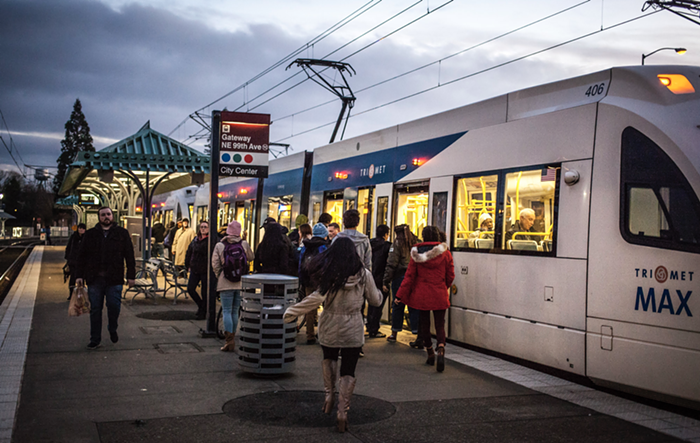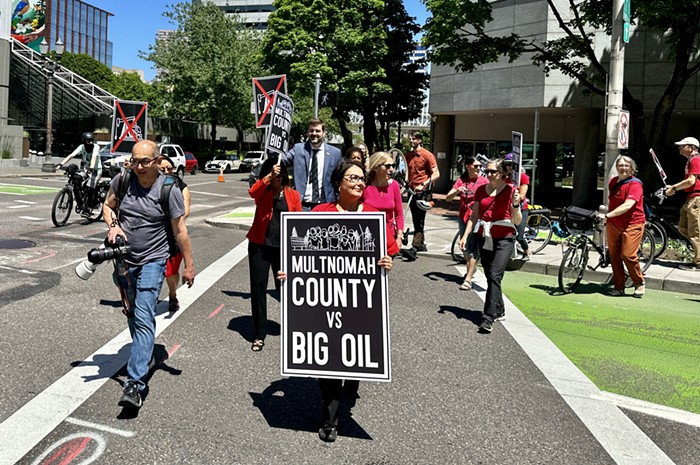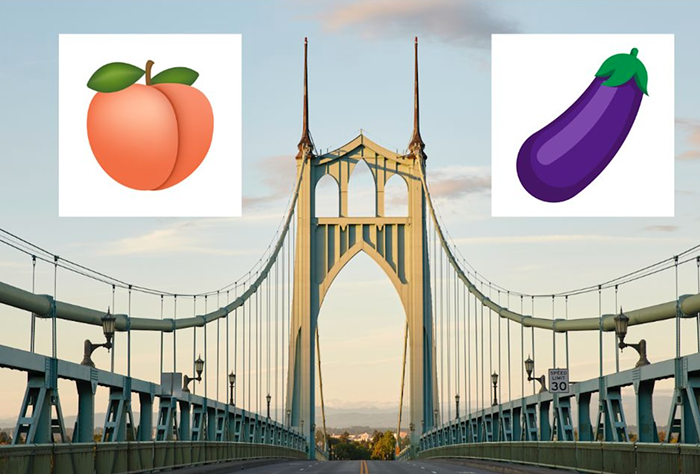IN THE KICKSTARTER-FUNDED tasting room that's nestled among his two-story stainless steel tanks and Hyundai-sized fermenters, Reverend Nat West leads me through his sprawling line of apple ciders. Some are crisp and accessible, some are connoisseur-sour, and one is a truly disruptive, game-changing cider that establishes his brand's importance in the evolution of the beverage. Hallelujah Hopricot is flavored with Belgian wit-style spices (coriander, bitter orange peel, paradise grains), fermented near-dry with French saison and Belgian ale yeasts, mixed with apricot juice, and finished with two types of hops. It's beer, cider, and wine all in one, and it loudly redefines the possibilities of a drink that's due for a revolution.
A few visits to the inner-Northeast cidery's taproom—and a trip through its six-cider sampler ($8)—inspired the following interview.
MERCURY: Cider, once seen mainly as a beer alternative, seems to be going after the wine drinker. What's your perspective on this?
NAT WEST: There is no "cider culture" to speak of in the US and even in Portland, the largest cider market in the country. Because of this, craft cideries have two options for marketing: sell to craft-beer drinkers or wine drinkers. We chose beer because we're beer drinkers, we understand beer culture, we think beer is more exciting than wine, and we wanted to make beer-y ciders, not wine-y ciders.
Demographically speaking, who is the cider customer? Has this profile seen any change lately?
For us, there are primarily two types of buyers: Experienced craft-beer drinkers and the craft curious. Craft-beer drinkers are always searching for the next new flavor from their favorite breweries and always willing to try a new beer from a new place. So drier ciders fit in well with that outlook. I like to think of the "craft curious" as the friends and family members of craft-beer drinkers. These folks might not like Boneyard's Notorious IPA or a really strong barley wine, but they don't drink PBR either. Cider is very approachable for nearly everyone, and these craft-curious drinkers enjoy the flavors, the complexity, and most importantly, the drinkability of our ciders.
Is there a concerted effort in the American cider industry to update cider's image?
Yes. For many years, it was seen as a "sorority drink," like a wine cooler. Cheap, sweet, marketed to partygoers, primarily women. And although women still make up 51 percent of the cider market, men now make up 49 percent, so there are many more options for marketing cider. Additionally, the birth of the craft-cider business in the last 10 years and the massive growth of the category in the last few years allows a broader market to buy cider.
How are cider houses going after new customers? What will it take to get cider in more shopping baskets?
The proliferation of new ciders is helping out a lot. With more cideries joining the market with diverse flavors, retailers will have to expand their shelf space. When that happens, customers take more notice of cider. We're seeing massive growth in the market in the last couple years and I'm sure this growth will continue. Right now, cider is about 0.2 percent of the US beer market but it's 20 percent of the UK beer market. We might never get to 20 percent, but if we double every year for the next many years, we won't hit the ceiling.
What foods are various types of cider best paired with?
Different ciders for different foods, but for the most part, wherever white wines are served, ciders can do the job better. Fish, seafoods, cheeses, spicy foods, and to some extent, fatty foods like duck and pork. Pork is always perfect. There is no part of a pig that doesn't taste better with cider.
Aside from drinking cider straight, I've seen it used in cocktails. What's your position on using ciders as bases and adjuncts to liquor?
I made a cocktail last night using about two-thirds of a margarita and a third of our new summer seasonal Hibiscus Hymnal (with raspberries). It was really amazing. There are a number of bars using our Deliverance Ginger in their drinks. I'm a big fan of it, but the cost can be steep. A bartender can get some of the same flavors for much less price, so using ciders tend to drive up the cost of the drink. Only certain bars can do it.
What about in cooking, for making sauces?
I would love to see white wine banished from the cooking world and replaced with cider. We use cider for marinating, deglazing, reductions, you name it. If I'm cooking and drinking cider, I always put some cider into whatever it is. One of our favorites is a good winter fondue made with sharp cheddar, English-style cider like our Revival Dry, and mustard instead of the classic Gruyere and white wine.
What have your biggest hurdles been so far, in terms of setting up shop and getting customers to understand your product?
Getting customers to understand our product isn't a challenge. Just getting them to try it once is the only challenge. The cider speaks for itself. Sometimes I go to beer or cider events and hear the flowery language being used to describe cider (and ultimately convince the customer that it's good). I just state the ingredients, insist that it's actually dry, and answer questions.
We recently underwent a major expansion from my garage and basement to a new 3,500-square-foot production cidery with a taproom in the front. I was the general contractor on the $75,000 buildout, purchaser of new equipment, did all the fundraising from individuals and institutions, and was still trying to keep up with demand. That was a lot of work. But now we're focused on just making cider and growing the business.
Are there nutritional benefits to drinking cider?
Vitamin C, antioxidants like wine, sometimes lower calories than beer, no gluten if that's your thing. I can't say anything specific for fear of the wrath of the FDA.
Where do you want your brand to be in five years—in terms of product line, volume, and as part of the Portland community?
We expanded to Washington State recently and will be in British Columbia and Idaho within a month or two, and we have eyes on the Bay Area, so our growth will continue for at least a few more years. We started this year with two ciders on the shelf, and by the end of August, we will have nine including seasonal and limited releases. We pride ourselves on making a diverse range of ciders and we will continue to make very unique flavors and push the boundaries of what it means to make cider. We've been growing by 30 percent every month, month after month, so sometimes I feel like all we're doing is growing, so five years of growth is too far in the future to realistically imagine. And we're a Portland-based company. Everyone who works here lives in North and Northeast Portland and we're excited to occasionally squeeze into the gaps in the Portland craft-beer scene.
_________________________________________________________________________________________
Reverend Nat's taproom is open Thurs-Sat 5-10 pm and Sun noon-5 pm.



















